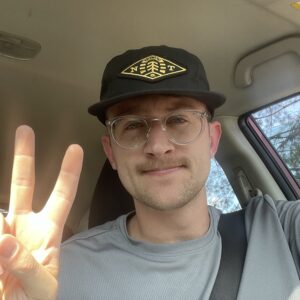Unlike some, I didn’t grow up backpacking. I had camped (glamped) with family on several occasions, but carrying a pack or setting up a tent more than 30 yards from a car was foreign to me. I’ve learned much about backcountry travel since then, and it’s helped me draw some parallels to the criticality of discipleship & rooting in the Scriptures. Here are two stories.
May 2020 – Dolly Sods Wilderness
My window between graduating college and starting my first job was incredibly small—just 23 days—but it was certainly large enough for a celebratory backpacking trip.
So 8 of us senior men—most, recent grads—decided to ship out for Dolly Sods, West Virginia, for a weekend full of reflection upon our college years, soul-preparation for life after college, and fellowship over backcountry feasts. (Look up a Ramen bomb—you won’t be disappointed.)
Sidebar: Dolly Sods Wilderness is one of my favorite places to backpack. From the diversity in landscape and flora to the abundance of backpacking loops, this corner of West Virginia is a treat for backpackers of all skill levels. For this illustration, however, the only thing to note is that many of the trails get m-u-d-d-y. (One of my “endearing” names for the place is Soggy Dogs—something you’re guaranteed to have if you don’t bring gaiters or waterproof boots…)
On this specific trek, I remember being challenged, multiple times, by very muddy trails; some stretches of the trail were entirely submerged by water. Fortunately for me, however, I was often following others through these stretches. I witnessed friends make steps that sent them shin-deep into mud. I saw footings that slipped. I watched cautious ones blaze a trail around wet areas, and daring ones hop rock-to-rock all the way through.
In following others, seeing both their successes and mistakes, I was able to chart a course that was safest (and driest) for myself.
It was a lesson in the value of Christian discipleship: one believer helping another walk in the Way of Jesus. It’s no secret that the Christian life is hard; it’s compared often, in part, to a dying, and the path is often muddy, obscured, seemingly crowded with obstacles. But in walking with another believer, one who is a few steps further down the trail, we learn real and practical lessons in following Jesus, and just might make the Way safer and more rewarding for ourselves.
May 2021 – Wrangell-St. Elias National Park, Alaska
While hands-down the coolest location I’ve ever adventured, Alaska is also where I’ve been the most scared on a trail.
We spent the first few days driving east out of Anchorage, stocking supplies, and beginning the initial portion of our mountain-pass out-and-back. We trekked on animal highways—led onward by moose droppings—and were often walled in by sheer, snow-capped peaks.
While there was something serene about seemingly having an entire Alaskan wilderness to ourselves, it was also incredibly unnerving. At no point on our hike did we see a soul, and we were also tens of miles from the nearest helping hand should something have gone wrong. We didn’t have great cell service.
As we drew nearer to the supposed end of our hike, we somehow realized that we didn’t exactly know where we were. The way wasn’t at all familiar, and we didn’t know how to continue. (In retrospect, we actually weren’t as lost as we thought we were—and it’s really hard to get lost on an out-and-back hike. But, for a moment, I was terrified.) What followed was an in-depth session of comparing our landscape to the map and our compass. To make sense of a landscape that was unfamiliar and a path that was unsure, we sought answers from what we knew to be true.
In life, especially life in your 20s, each believer may have a unique path, but each one is rooted in the story and person of Jesus. This Map, like that of the inexperienced backpackers we were, defines the landscape and positions the user within it, even as we pass through new, unfamiliar sociocultural landscapes. We may still feel lost and unsure, but as we uphold the Scriptures as true and relevant to even these disorienting landscapes, we can discern our way, just as the Psalmist said: “How can a young man {or woman} keep his way pure? By guarding it according to your word” (Ps. 119:9).
(I might even take the illustration one step further and exhort: know how to read the Map. Just as a map of the Alaskan backcountry is useless without skills in observation and triangulation, so too is the Bible robbed of its full guiding potential without practice and instruction. If you have already learned some of these skills, great!—but don’t be surprised if you need to make some adjustments as you transition into new places and new schedules. If you need to learn more or are just getting started in the Bible, that’s also great!—I highly recommend finding a friend or group who can help.)
Sadly, it’s been too long since I’ve wearied under a pack or admired a valley vista; I often ache for a weekend away in the woods. Nevertheless, the lessons I’ve learned there are indelible—follow someone in the Way, guard your steps according to the Map.
Resources
Here are a few resources Tyler recommends:
- For my literal hikers—Leave No Trace (hyperlink: The 7 Principles – Leave No Trace Center for Outdoor Ethics (lnt.org))
- For my figurative hikers—The Bible Project (hyperlink: Study the Story of the Bible With Free Tools (bibleproject.com))
- John 14:5-6

